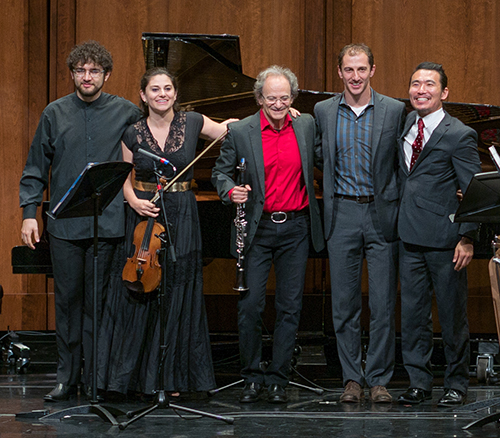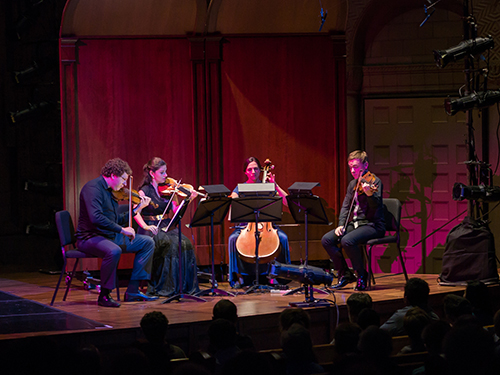by Mike Telin

The performance of Debussy’s sublime Violin Sonata by Noah Bendix-Balgley and pianist Roman Rabinovich was, in a word, stunning. Playing with a smooth, liquid tone, Bendix-Balgley made the intricate lines of the opening Allegro vivo sound easy. He brought clarity to the recurring, downward triadic motif that ties the movement together. Rabinovich matched that clarity with his light touch. The duo made everything so effortless it was easy to forget how complicated Debussy’s writing is. The Intermède: Fantasque et léger was highlighted by refined, well-shaped lines and nuanced articulations, while the Finale: Très animé exuded thoughtful energy, bringing this gripping performance to a brilliant close.
In an interview with ClevelandClassical.com, composer Sebastian Chang explained the title of his new work, Cryptogenic Infrastructure Fantasy. “Cryptogenic is usually a disease of unknown or obscure origin, and infrastructure fantasy because the structure is loose. So, that’s what the title means — it’s of unknown origin and fires from the hip.”

The eight-minute work opens with a grand tutti march, which is quickly interrupted by fast, technical flourishes in the violin, clarinet, and piano. The opening then returns, this time with added sharp, tricky rhythms. As the violin and clarinet fight for the lead, the timpani begins to take over. A slower, Arabic-sounding section features a lovely duet for the violin and clarinet, which gradually builds to a dramatic conclusion. The Cohen Family Quartet played the idiosyncratic piece with superb technical flair, bringing out the wit of each section. Although the jury is still out about the inclusion of timpani in a chamber piece, Alexander Cohen played with judicious dynamics and punctuations. All-in-all, Cryptogenic Infrastructure Fantasy is a fun work that fit the spirit of the occasion.





Photos by Gary Adams.
Published on ClevelandClassical.com July 10, 2018.
Click here for a printable copy of this article




